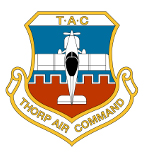One thing you need to consider is the propeller's design Horsepower.
I tried another 68x68 that was designed for a 150 HP O-320.
The blade area is greater and it was great enough to reduce the static RPM (about 2100) on my O-290 compared 2340 RPM for the Ted Hendrickson 68x68 that I run.
The ground roll was longer and the initial rate of climb was poor. The RPM did not noticeably increase until the airspeed approached 120 MPH, then the two propellers started to behave similarly.
Above 140 MPH they were about the same. I only flew that prop once. I wouldn't carry a passenger with it.
I'm concerned that you are adding 6" more pitch, and greater blade area possibly designed for a 160 HP O-320. I think your static RPM will be low, maybe 2000 RPM.
Just a quick napkin calculation:
125 HP divided by 2700 RPM = .0462963
.0462963 x 2000 RPM =
92.59 HP Some Napkin eh? 
Not much for take off, even on a 3600 foot strip if there are any obstacles to clear. Also the propeller may be semi-stalled and not deliver as much thrust per HP until it starts to gain RPM with airspeed.
If you decide to try this prop, I suggest you establish a point along the runway that you can confidently abort the take-off and stop before you reach the end. Then make sure you are airborne by that mark. Make the aircraft as light as you reasonably can.
@ 2340 RPM, I'm taking off with 108.33 HP. Soon after liftoff, the RPM is climbing along with the airspeed. So testing the other 68x68 prop designed for 150 HP gave my 2100 RPM, about 97.22 HP that did not increase until after I had cleared the trees and accelerated toward 120 MPH.
I hope this gives some perspective to your prop trial and helps the outcome.







